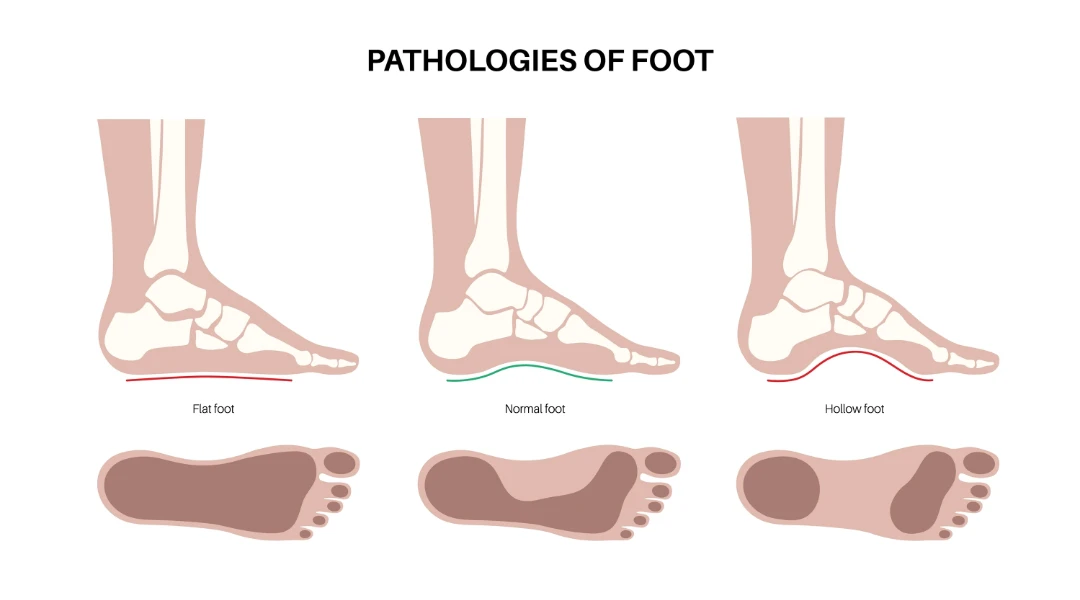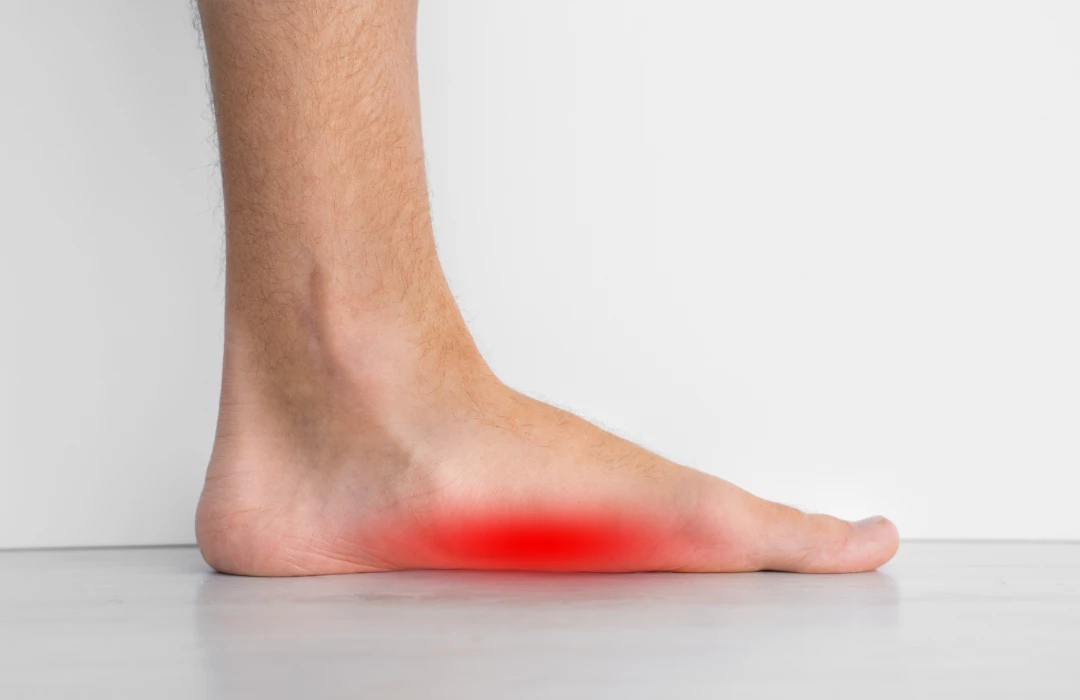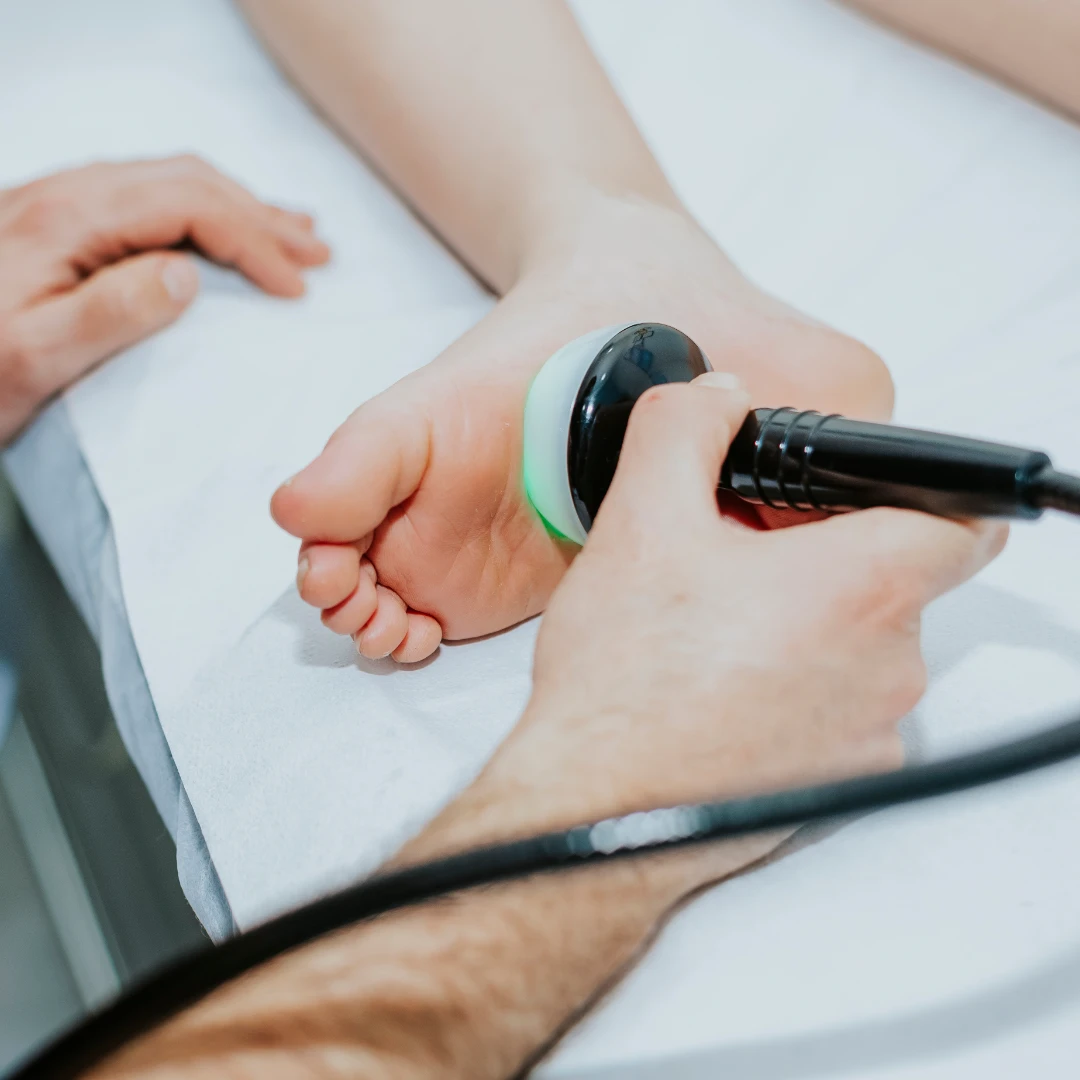Flat
Feet
- Home
- Conditions We Treat
- Foot & Ankle
- Flat Feet
What are
flat feet?

Flat feet, or flatfoot, is a condition in Singapore characterised by little to no arch in both or one of the feet. It is a common condition affecting roughly 20% to 37% of the global population – making it one of the most common foot-related problems that warrants clinical visits. There are several types of flat feet, such as:
- Fallen Arches: fallen arches are an adult-acquired condition that occurs when the foot’s arches unexpectedly collapse. This is due to inflammation or a tear in the leg tendon, that is responsible for supporting the arch, resulting in pain, especially when walking.
- Flexible: flexible flat feet refer to visible arches when the feet relax but disappear when pressure is added to the feet. It typically develops during adolescent years, and gradually worsens with age as the tendons and ligaments stretch, swell, and eventually tear.
- Rigid: rigid flat feet, on the other hand, refer to no arches in one or both feet when standing or sitting. Similar to flexible flat feet, it develops during adolescent years and worsens over time to a point where it becomes difficult to flex or even move the feet.
- Vertical Talus: vertical talus is a congenital defect, which prevents the aches from developing. It refers to the talus bone located in the wrong position, causing the foot to resemble the foot of a rocking chair.
What causes flat feet?
Flat feet are caused by an array of reasons such as developmental anomalies. Most people are born with flat feet, however, not all develop arches especially children with genetic disorders such as Down Syndrome. Additionally, some flat feet are also a result of weak foot anatomy, whereby the arches are too weak to maintain their arch when pressure is added– these can occur due to an array of factors from biological factors to the outcome of certain medical conditions.
Who is at risk of flat feet in Singapore?
Although flat feet are a common condition, several risk factors would indicate the likelihood of you developing flat feet in your lifetime. Some of these risk factors include:
- Active Lifestyle: athletes or people who lead a more active lifestyle have a higher risk of developing flat feet due to the possibility of foot and ankle injuries.
- Age: your risk of developing flat feet increases as you age as your muscles, and tendons slowly deteriorate.
- Gender: women are more at risk of developing flat feet due to fat buildup that results in the collapse of the arches.
- Genetics: your risks of developing flat feet are higher if one or both of your parents have flat feet.
- Hypertension: if you have hypertension or high blood pressure, then you have an increased likelihood of developing flat feet as it decreases the blood supply to the ligaments, and muscles that help the foot maintain its arch.
- Obesity: you are more at risk of developing flat feet if you are obese, due to the excess weight added to the feet.
- Pregnancy: women who are pregnant are more at risk of developing flat feet due to the excess relaxin hormones that are being released to anticipate childbirth. These hormones are known to loosen the ligaments throughout the body, thereby causing the feet to temporarily lose their arches.
- Systemic Conditions: systemic conditions such as diabetes, and rheumatoid arthritis can result in flat feet as they gradually deteriorate the muscles’, and ligaments’ ability to support the arch.
- Trauma to the feet: injuries such as Achilles tendinitis, and foot and ankle fractures put you at an increased risk of developing flat feet.

What are the symptoms of flat feet?
Unfortunately, flat feet typically do not cause obvious symptoms. However, some signs would indicate the possibility of flat feet including:
- Changes in the alignment of your feet, and legs, which result in imbalance.
- Frequently tripping, especially among children aged 6 years, and older.
- Pain in the heel, middle of the foot (arch), and leg, either when walking, standing, or relaxing.
- Swelling, or stiffness in your feet.
- Toe drift, whereby the toes, and the front of the foot point outward.
- Uneven shoe wear, such as when one foot fits the shoe properly compared to the other.
Have you been experiencing unexplained pain in your feet? Then do contact us to schedule an appointment to have it examined.

How are flat feet diagnosed in Singapore?
Diagnosing flat feet is a straightforward procedure. At Cove Orthopaedics Clinic, our orthopaedic specialist, will examine the mechanics of your feet by assessing your arches when you stand, walk, and sit. They will also assess the muscle strength in your ankles, and pinpoint the main source of your pain, and discomfort. Beyond a physical examination, our orthopaedic specialist may also order imaging tests to examine the bone structure of your feet if deemed necessary;
- Computed Tomography (CT) scan: captures images of the structure of your foot from different angles to visualise muscles, ligaments, and tendons.
- Magnetic Resonance Imaging (MRI): to obtain a more detailed, and closer image of your bones, and soft tissues.
- Ultrasound: clearly depicts the condition of tendons and other soft tissues.
- X-ray: provides detailed images of your bones and joints, which help determine any misalignments and detect arthritis.
How are flat feet treated in Singapore?
Often, people with flat feet do not experience significant problems that require extensive, or invasive treatments. In most cases, our orthopaedic specialist will outline a treatment plan that focuses on alleviating the pain and helping patients regain the flexibility and mobility of their feet. As such, treatment options can be one or a combination of the following:
- Medications: you may be prescribed nonsteroidal anti-inflammatory drugs (NSAIDs) to alleviate pain.
- Physical therapies: physical therapies are often recommended to stretch and strengthen tight tendons and muscles to improve the feet’ flexibility, and mobility.
- Podiatry: providing patients with customised insoles and performing treatment modalities that may help alleviate symptoms.
- Supportive devices: you may be prescribed supportive devices such as custom-made arch supports to reduce pain, discomfort and subsequently, inflammation.
- Surgery: while surgeries are not scheduled to correct flat feet they may be performed to correct bones or tendons that are causing pain.
Beyond medical intervention, you will also be encouraged to make certain lifestyle changes to improve your condition, such as:
- Resting adequately allows your feet to heal and rest properly.
- Exercising regularly and eating a well-balanced diet to prevent excessive weight gain that can lead to obesity and consequently, flat feet.
- Monitoring any changes to your feet including pain and discomfort.
- Wearing shoes that offer appropriate support to aid you in walking and moving comfortably.
Your feet’ health is of utmost importance as it impacts our quality of life. It is important to ensure you seek immediate and proper medical attention in the event you are experiencing any pain, or difficulties in walking or standing. Get in touch with us to stay one step ahead of your feet health.
Frequently asked questions
Is it possible to prevent flat feet?
Unfortunately, it is impossible to prevent flat feet once you have developed them or were born with them. The next best thing you can do is to monitor your weight and take necessary precautions to avoid any discomfort associated with the condition. It is also advisable to see an orthopaedic specialist whenever you experience any foot pain.
Are there any complications associated with flat feet that I should know about?
Yes, having flat feet can increase your risk of developing certain medical conditions, such as:
- Arthritis.
- Bone spurs.
- Bunions
- Corns, and calluses.
- Hip pain.
- Lower back pain.
- Knee pain.
- Shin splints.
Does having flat feet impact my footwear choices?
It does not necessarily change your footwear choices however, there are some considerations that you should consider when buying shoes, like:
- Choosing shoes that fit your feet properly—not too snug, and not too loose.
- Ensuring the shoes complement the shape of your feet.
- Keeping the heel below 2.5 cm.
At what point should I see an orthopaedic specialist for my flat feet?
If you begin to experience the following symptoms, then it is time to schedule an appointment:
- Difficulties when walking, accompanied by pain.
- Noticeable fallen arches.
- Stiff feet.
- Sudden balance problems.










